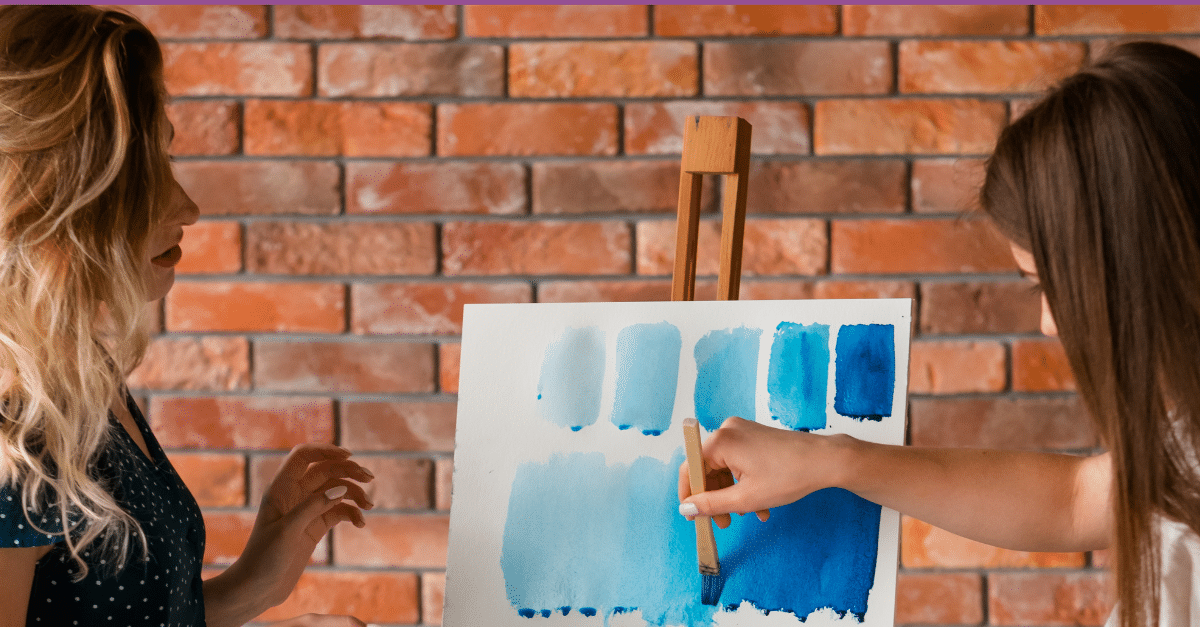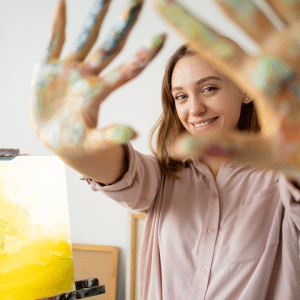
Art therapy is the intersection of art and psychology, providing a unique approach to mental health treatment. As a creative, non-verbal form of expression, art therapy is a therapeutic technique that uses the process of creating art to improve mental, physical, and emotional well-being. It facilitates self-expression, helps individuals resolve conflicts, improve self-esteem, relieve stress, and achieve insights. It is a unique form of therapy that can be especially beneficial for individuals coping with attention-deficit/hyperactivity disorder, anxiety, depression, obsessive compulsive disorder, and other related behavioral health conditions.
Art therapy combines active art-making, the creative process, and applied psychological theory to promote healing and personal growth. The key here lies not just in creating art, but in the process itself—expressing oneself, navigating emotions, resolving internal conflicts, and fostering self-awareness.
The Neurobiology of Art Therapy
Engaging in the creative process stimulates the brain in a variety of unique ways. Neuroscientists suggest that the brain’s reward pathways become active during the creative process. This reward system, engaged during enjoyable activities such as eating and laughter, can also be triggered by creating art, leading to the release of dopamine. This not only engenders a sense of happiness but also motivates individuals to continue the activity.

Art Therapy: A Language Beyond Words
The benefits of art therapy shine in its ability to offer a non-verbal medium for expression. This becomes particularly significant for individuals dealing with trauma or suffering from depression, who may find verbal expression challenging. Art therapy allows the right hemisphere of the brain, responsible for creativity and emotion, to express itself without needing translation into language, a function of the left hemisphere. This is one of the main reasons why art therapy is so powerful. It bypasses the usual verbal “filters” and enables direct expression of inner feelings and experiences.
Art Therapy and Mindfulness
One of the most compelling benefits of art therapy is its inherent encouragement of mindfulness. Mindfulness, the practice of non-judgmentally focusing on the present moment, is a concept embedded in many psychological therapies, including those for depression and anxiety. As individuals focus on their artwork, they’re drawn into the present moment. This often results in a state of “flow“, a mental state where worries and ruminations are set aside, aiding in stress reduction and promoting relaxation.

The science of art therapy, therefore, serves as a testament to its effectiveness as a creative treatment option in the realm of mental health. It doesn’t only improve mental health but also enriches lives by allowing self-expression and personal growth. The canvas remains wide open, filled with potential for understanding, growth, and recovery.
Art therapy, at the intersection of art and psychology, has the potential to change lives, and this is backed by science. So, when an individual engages with a paintbrush or a piece of clay, they’re participating in a process of healing, self-discovery, and personal growth. That’s the powerful benefit of art therapy.
Edited by: Maddison Henley, PA-C
Other Blog Posts in
Animo Sano Psychiatry is open for patients in North Carolina, Georgia and Tennessee. If you’d like to schedule an appointment, please contact us.
Get Access to Behavioral Health Care
Let’s take your first step towards. Press the button to get started. We’ll be back to you as soon as possible.ecovery, together.




